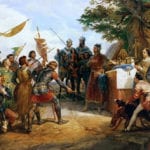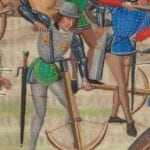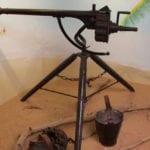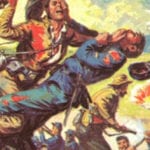 Miscellaneous
Miscellaneous  Miscellaneous
Miscellaneous  History
History 10 Great Escapes That Ended Right Back in Captivity
 Weird Stuff
Weird Stuff 10 Fascinating Things You Might Not Know About Spiders
 Food
Food 10 Everyday Foods You Didn’t Know Were Invented by the U.S. Military
 History
History 10 Odd Things Colonial Americans Kept at Home
 Weird Stuff
Weird Stuff 10 Superstitious Beliefs That Once Consumed Entire Cultures
 History
History 10 Bizarre Friendly Fire Incidents in Military History
 Technology
Technology 10 Modern Technologies That Accidentally Imitate Ancient Magic
 Mysteries
Mysteries 10 Mysteries of the Human Genome
 Weird Stuff
Weird Stuff 10 Things So Rare They’ve Only Been Found Once
 Miscellaneous
Miscellaneous 10 of History’s Most Bell-Ringing Finishing Moves
 History
History 10 Great Escapes That Ended Right Back in Captivity
 Weird Stuff
Weird Stuff 10 Fascinating Things You Might Not Know About Spiders
Who's Behind Listverse?

Jamie Frater
Head Editor
Jamie founded Listverse due to an insatiable desire to share fascinating, obscure, and bizarre facts. He has been a guest speaker on numerous national radio and television stations and is a five time published author.
More About Us Food
Food 10 Everyday Foods You Didn’t Know Were Invented by the U.S. Military
 History
History 10 Odd Things Colonial Americans Kept at Home
 Weird Stuff
Weird Stuff 10 Superstitious Beliefs That Once Consumed Entire Cultures
 History
History 10 Bizarre Friendly Fire Incidents in Military History
 Technology
Technology 10 Modern Technologies That Accidentally Imitate Ancient Magic
 Mysteries
Mysteries 10 Mysteries of the Human Genome
 Weird Stuff
Weird Stuff 10 Things So Rare They’ve Only Been Found Once
10 Amazing Military Victories Against The Odds
Military history is full of amazing feats, the greatest of these being when victory is achieved despite the odds being stacked against the winning side. These battles tell tales of determination and courage, leading to victories that no one thought possible.
10 Battle Of Longewala
1971
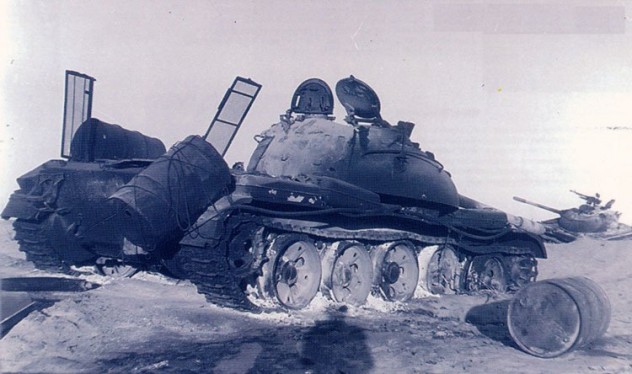
The Battle of Longewala was one of the first Western battles of the Indo-Pakistani War of 1971. It occurred when a large number of Pakistani troops and tanks entered India, meeting Major K.S. Chandpuri of the Indian army with his 100 men, some of whom were training to be mortar men, and their single Jeep, which was fitted with an anti-tank weapon. The major was occupying a fortified sand dune at Longewala, a small hamlet in the Thar desert, when his position came under bombardment early in the morning of December 5, 1971, killing five camels. By 4:00 AM on the same morning, around 55 Chinese T-59 tanks and US Sherman tanks controlled by the Pakistani force were spotted to the south, as well as a battalion of Pakistani infantry numbering around 3,000 and 24 artillery guns.
During the course of the night, the major and his men destroyed 12 enemy tanks, pushing back attack after attack from their sand dune with limited means of retaliation. Due to a lack of night vision in outdated Indian planes, air support was refused to the defenders until morning. When two Indian hunter planes arrived at dawn, the desert became a killing field, with nowhere for the enemy tanks to hide and sand making it difficult to maneuver. By 11:00 AM, after the men had held out against a column of tanks and a battalion of infantry, help arrived. Major Chandpuri was able to rout the enemy on December 6, with only eight enemy tanks escaping the wrath of the 101.
9 Battle Of Okehazama
1560
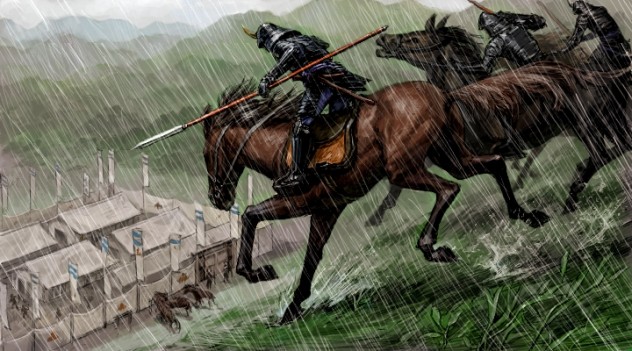
In the 1500s, Japan was in the midst of a massive civil war, with local warlords seeking control of the entire country. The Oda, a relatively weak family, was led by Oda Nobunaga, a reckless and unpredictable 26-year-old, thought by some to be mentally unstable. In 1560, Imagawa Yoshimoto, from the far more powerful Imagawa family, made an attempt to take Kyoto, crossing through Owari, controlled by the Oda family. Oda Nobunaga met the enemy army of between 20,000 to 40,000 with a force of 2,000, even after his generals had told him to surrender. Setting up camp at Zenshoji, a temple fortress, on June 11, 1560, Nobunaga ordered his men to construct a dummy army. When he arrived, Yoshimoto set up camp and allowed his men to eat and drink the loot they had captured from the easily conquered Oda fortresses, under the belief that victory against such a small defending force would be easy.
On June 22, Nobunaga and his army made their move. They left the fortress and sneaked into the hills overlooking the enemy force, with a thunderstorm silencing their noisy approach. Suddenly, they charged the drunk and unprepared enemy. Yoshimoto’s men fled in all directions to avoid the slaughter, leaving their leader unprotected. Yoshimoto, thinking the commotion was merely a drunken squabble between his men, was slain before he had any idea what was happening. The numerically inferior Oda force won the battle within two hours.
8 Siege Of Vienna
1529

In August 1526, Sultan Suleiman I, of the Ottoman Empire, successfully seized control of southern Hungary. After unsuccessful military attempts by Ferdinand I, the brother of the Holy Roman Emperor, to retake the land, the Ottomans marched to take control of Hungary on May 10, 1529.
After Ferdinand abandoned the city to (in effect) go and cry to his brother until he got help, the Marshall of Austria, Wilhelm von Roggendorf, took command of Vienna’s small garrison. He commanded the defense alongside a 70-year-old German mercenary, Niklas Graf Salm. The Viennese were able to muster around 20,000 men and 75 artillery guns to defend the city. The Ottoman army that arrived at Vienna in September numbered 100,000 men and 500 artillery pieces. The siege began with a bombardment of over 300 of those guns, used to cover attempts by the Ottomans to undermine the walls by digging tunnels.
Upon learning of these attempts, Niklas had bowls of water, filled with dried peas, placed around the walls. The dried peas floated on the surface of the water and, when disturbed by nearby digging, created ripples in the water, informing the defenders that the Ottomans were coming. Defenders then dispatched their own diggers to intercept the enemy’s digging attempts and destroy the mines. In one such instance, they nearly captured the Suleiman’s Grand Vizier. On October 6, 1529, 8,000 troops left the city in a rather risky raid that aimed to put a stop to the mining operations. They succeeded in destroying most of the attackers’ mines but took heavy casualties in doing so. On October 14, Suleiman’s forces retreated, having lost most of their mines to the defenders or rain and having taken heavy casualties.
7 Battle Of Galveston
1863
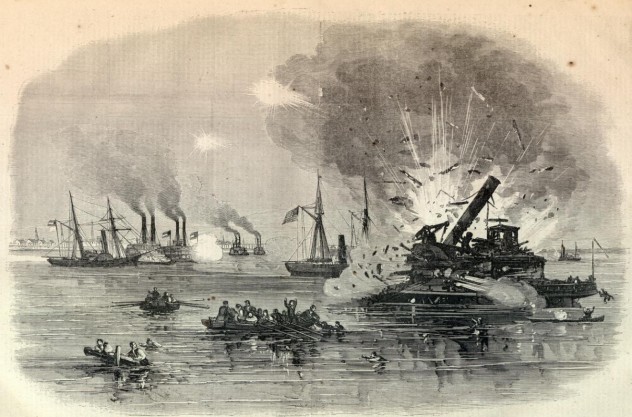
On January 1, 1863, John B. Magruder attacked the Union-occupied city of Galveston, Texas. The city wharf was occupied and heavily fortified by 260 men, as well as being covered by six Union gunboats with their many guns. The Confederates, on the other hand, had 21 pieces of artillery, 500 men, and two river steamers, Bayou City and Neptune, both with some cotton bales and a single gun protecting the flanks of the crew and boarding parties.
At around dawn, the Confederate artillery bombarded the Union boats, to little effect. A small rebel ground force attacked by land, though they met with tough resistance and their ladders proved too short to climb the Union defenses. At the same time, the two river steamers led an attack against the Union gunboats. After a failed attempt to ram the Union USS Harriet Lane, the Neptune sank instantly. All hope was pinned on the Bayou City, outnumbered six to one against far superior ships. The crew of Bayou City successfully rammed and overpowered the crew of the USS Harriet Lane. Meanwhile, the Union flagship USS Westfield became grounded in shallow water.
A truce was called for the two sides to consider their positions. Commodore Renshaw, on board the USS Westfield, decided to scuttle the ship, planting explosives. As they departed the ship in row boats, the explosion failed and Renshaw decided to return to the ship to see what was wrong. The ship exploded as they re-boarded, killing Renshaw and 13 of his crew. The Union ships retreated to sea the moment they saw their commander blown to kingdom come. Having lost their sea support, the Union forces surrendered. The Confederates suffered losses of 26 killed and 117 wounded. The Union suffered 400 captured, about 150 casualties on the ships, and the destruction of the USS Westfield.
6 Battle Of Tolvajärvi
1939
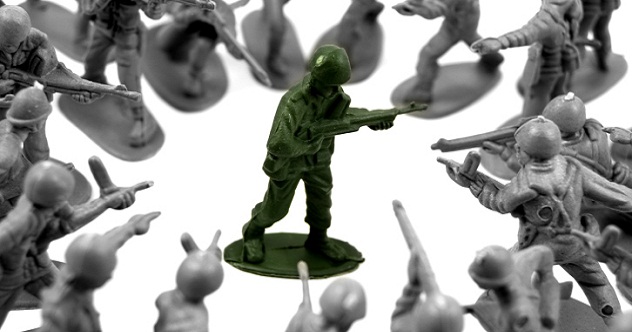
The Battle of Tolvajärvi was part of the Finnish counterattack at the start of the Winter War against the Soviet Union. The 139th Soviet Division, numbering some 20,000 men, 45 tanks, and 150 artillery, had been forcing the 4,000 Finns holding the Tolvajärvi area to retreat at a rapid pace. Colonel Paavo Talvela, of the Finnish army, planned to divide his already outnumbered forces and launch a pincer attack over two frozen lakes. Three groups of Finns, attacking the north, center, and south of Soviet defensive lines, would attempt to encircle the overwhelming forces and destroy as much of it as possible.
At 8:00 AM on December 12, 1939, the counterattack began. One group of Finns attacked the Soviet defenses to the north and met a far superior Soviet regiment that was planning to attack the Finnish flank. After four hours of vicious fighting the group of Finns was forced back, though they had kept the Soviets from being able to do anything against the other two attacks. On top of this, a small Finnish company stayed behind, proving too stubborn to defeat and preventing the 718th Soviet Division from sending reinforcements to the south.
The second group of Finns attacked the Soviets from the center, overwhelming an entire Soviet division despite their artillery support proving extremely weak. Advancing toward a hotel, which had been turned into a fortress and used as a command center by the Soviets, they captured the building after a bloody fight in which their commander was killed.
Finns to the south captured Kotisaari Island after bloody fighting. The victory was one of the Finns’ biggest of the war, boosting morale. They also captured vast supplies of weapons and killed over 1,000 Soviet soldiers compared to the 100 or so killed on the Finnish side.
5 Second Battle Of Lacolle Mill
1814
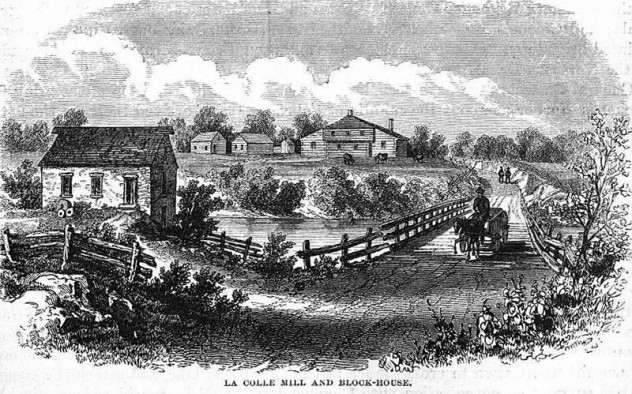
During the War of 1812, American forces tried numerous times to break through English and Canadian defense lines in lower Canada so that they could advance on Montreal. In February 1814, Major General James Wilkinson led a force of 4,000 men and 11 artillery pieces to try and seize Montreal. Early in the afternoon of March 30, Wilkinson, forced to use a bridge to cross the strong Lacolle river, met a British garrison at Lacolle Mill. Major Richard Handcock commanded the 180 British soldiers and Marines, along with 160 Canadian Fencibles (an infantry unit) nearby, which later reinforced him.
Wilkinson could only fire three of his 11 artillery guns on the enemy position, leading hours of bombardment to achieve little damage on the stone mill. Outnumbered 12 to 1, and relatively untouched by American attacks, the plucky Handcock, running out of ammunition and presumably insane, ordered a charge to capture the American artillery. The first charge failed, however, believing a single suicidal charge would be insufficient in securing his place in the annals of history, Handcock led a second charge after being reinforced with around 550 men, which captured the artillery briefly before being forced to retreat. By 6:00 PM, Wilkinson retreated, with the Americans having suffered 254 killed or wounded, while the far smaller British force suffered 61.
4 Battle Of Gate Pa
1864
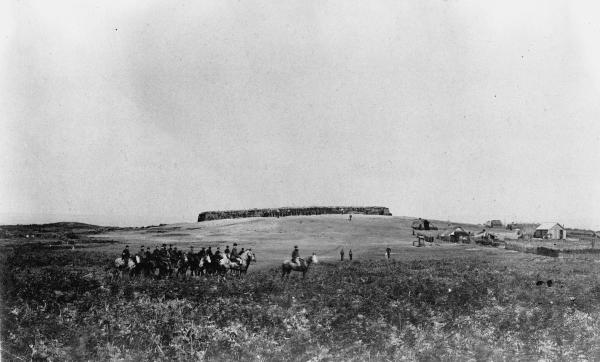
The Battle of Gate Pa in April 1864 was part of the New Zealand Wars, and an ultimately successful attempt by the British to confiscate land from the Maori natives of New Zealand for refusing to accept colonial authority. Gate Pa, built on the doorstep of the main camp of the British, was a Maori fortress which came under attack by the British commander, Duncan Cameron, 1,700 soldiers and 17 artillery pieces on April 27.
Around 235 Maori warriors occupied the fortress, under the command of Rawiri Puhirake. On the 28th and 29th of April, artillery rained down on the fort, with 136 kilograms (300 lbs) of explosives falling on the fort for every member of the garrison. Whilst this would be overkill for any other defender, it was anything but, as only 15 defenders died in the barrage and the defenders eventually chose to stop firing in retaliation, wanting the British to believe that they’d been annihilated. With Cameron thinking the defenders were dead or dying, a British storming party was sent into the fortress and allowed to occupy it for a few minutes. Hiding in bunkers, trenches and under floorboards, the defenders suddenly opened fire on the now relaxed British soldiers.
The invisible enemy forced the British storming party to retreat, along with a second storming party. Around 120 British soldiers were killed in the mayhem, though the defenders took minimal casualties. With the Maori realizing that while all the artillery rounds in New Zealand couldn’t kill them, all the rounds in the British Empire might have a small chance, they evacuated Gate Pa that night. They took with them captured weapons, as well as Cameron’s pride.
3 Second Battle Of Sabine Pass
1863
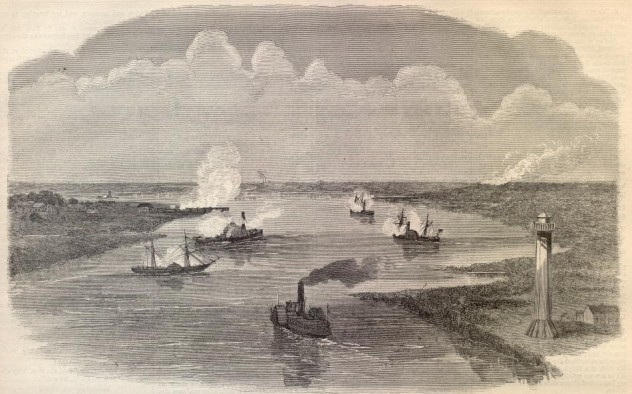
On September 8, 1863, a small confederate force held off the Union invasion of Texas at the mouth of the Sabine river. After being forced from Texas the previous year, General William B. Franklin, of the Union, led an amphibious force, aiming to retake Sabine Pass, an entrance point into Texas by water. Four gunboats, 18 transports and 4,000 troops set sail. Lieutenant Richard W. “Dick” Dowling of the Confederates, along with 47 soldiers of the First Texas Heavy Artillery Regiment, were based in Fort Griffin, with six cannons that overlooked Sabine Pass. This small force was all that stood between the Union and a successful amphibious invasion of Texas.
When they saw the Union ships, they opened fire, disabling the Sachem and the Clifton while under fire themselves. Eventually, they had damaged or destroyed so many Union ships that they blocked the river, forcing the Union to retreat, and those grounded to skirmish with the Confederate force until they surrendered. The Confederates lost no men while 28 Union soldiers were killed, 75 were wounded, and 315 were captured in one of the most humiliating defeats of the Union.
2 Battle Of Vitkov Hill
1420
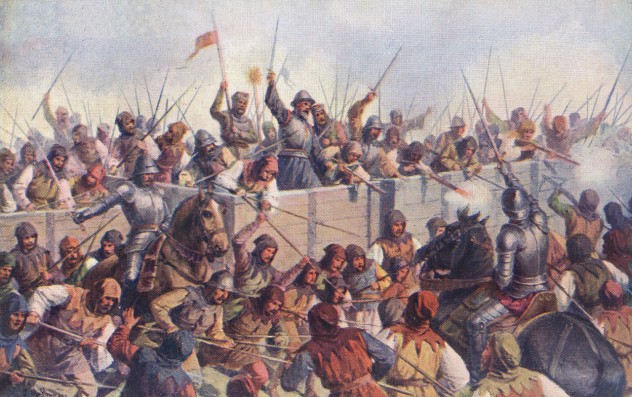
The Hussites were a Christian Protestant movement that attacked Catholic beliefs and practices. During the Hussite Wars in Bohemia (1419-1434), in which the Holy Roman Empire called a crusade against the Hussites, a small group of Hussite peasants held off a massive Crusading army. In February 1420, an army of 150,000 Crusaders marched on the city of Prague and laid siege. Jan Zizka, a Hussite commander, had been able to get his numerically inferior peasant army, who had defeated the Crusaders in previous skirmishes, into the city before it was besieged.
On July 12, 1420, the Crusaders, thinking that the city would be taken easily, attacked carelessly. The vastly outnumbered Hussite defenders focused on defending Vitkov Hill, a major part of the city’s fortifications. On July 14, after two days of fighting, the peasant army, fighting with only sharpened tools, had repelled every attack by the Crusaders, allowing a relief force to route the enemy and piss off the Pope to no end.
1 Battle Of Cerami
1063
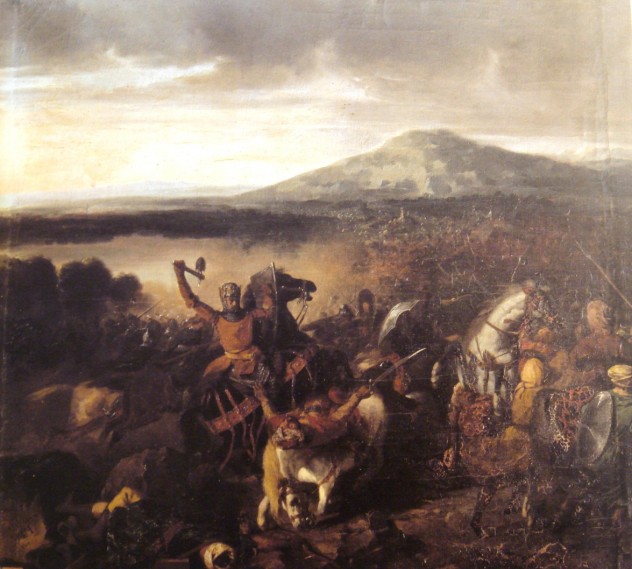
Roger I was a Norman knight and Lord of Calabria who, along with his brother, led a successful conquest against Muslim Sicily from 1061 to 1091 and became Count of Sicily. In 1063, Roger was occupying Cerami, a small settlement in Sicily, with 130 knights when a far larger Muslim army met them on the battlefield. The small force survived an initial charge, fighting in a vicious battle that lasted throughout the day before the Muslim army fled under cover of night.
Sources from the time that suggest 15,000 Saracens were slain and that St. George appeared at the battle and smote the enemy with nothing but his pinky finger are likely exaggerated and arguably impossible. However, the Normans likely killed many times their own number, as the Muslim force included troops from both Sicily and Africa. Cerami was seen as the turning point of Roger’s conquests and the papacy even granted the Normans a papal banner for their valor.
Mark is an award-winning 10 meter swimmer and not-so-award-winning shoe wearer and air breather. His degree in History and Geography doesn’t get him nearly as many women as he had expected. You can find him on Twitter right here.
